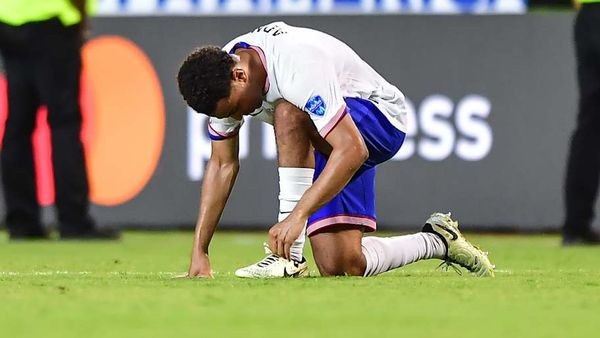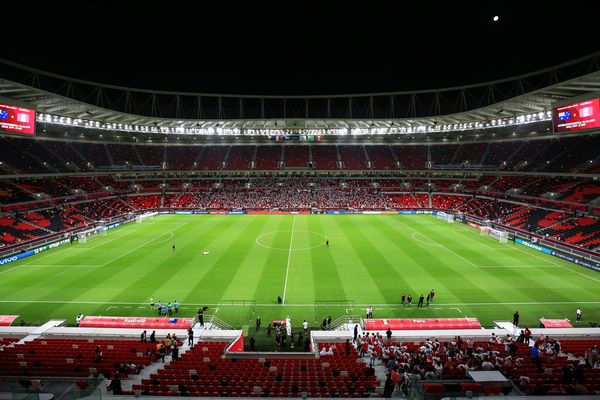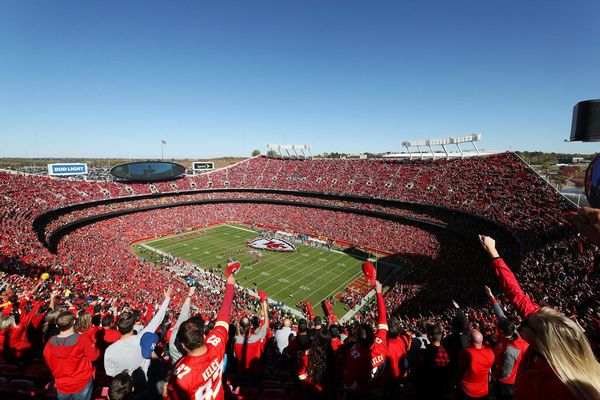MIAMI — If the scene at Fritz and Franz Bierhaus in Coral Gables last Thursday was any indication, Miami soccer fans are ready for the 2026 World Cup.
They were in full party mode, American flags and cowbells in tow, as Miami was announced as one of 11 U.S. cities that will host the 2026 Cup along with three in Mexico and two in Canada. The fans celebrated with high fives, beer toasts, schnitzel and bratwurst, and then they closed their tabs, and headed home.
If only it were that easy for the Miami host committee.
Their work began in 2017, when Miami first emerged as one of 41 potential host cities. The list was trimmed to 32 later that year, and then to 26, 23, and eventually 16. Negotiations between Miami bid leaders and FIFA went down to the wire — 8 p.m. last Wednesday night, the eve of the announcement, to be exact.
The final issue, according to sources, was the wording of some financial arrangements. Apparently, FIFA had gotten a bit spoiled with the most recent hosts, Russia and Qatar, which opened their checkbooks and rolled out the red carpets without many questions. The bidding cities for 2026 were wisely more judicious. Each had its own requirements and bottom lines.
Six cities did not make the cut: Edmonton, Nashville, Orlando, Cincinnati, Denve, and, most surprising, Washington D.C./Baltimore.
It seems wrong that the nation’s capital will not host any World Cup games, and proposed watch parties on the National Mall sounded fabulous; but the D.C./Baltimore joint bid had stadium and logistical problems. FedEx Field is outdated, so the games were going to be hosted in Baltimore at the newly renovated M&T Bank Stadium while the fan festivities would be in D.C., which is not an ideal arrangement.
D.C. hosted a Round of 16 match of the 1994 World Cup at the soon-to-be-demolished RFK Stadium, but those were entirely different times. Major League Soccer didn’t exist then. Now, the league has 26 teams, plenty of soccer-friendly stadiums to choose from, and the sport has grown immensely.
The 11 U.S. cities that made the cut for 2026 were Miami, Atlanta, New York/New Jersey, Boston, Philadelphia, Kansas City, Dallas, Houston, Los Angeles, San Francisco Bay Area and Seattle.
That Miami is one of the winning cities is a minor miracle, considering South Florida’s history of bickering politicians, egotistical business and community leaders and special interest groups with competing agendas. Yes, yes, all cities deal with those issues, but Miami takes it to a whole other level (just ask David Beckham and Inter Miami).
Everyone managed to play nice this time. Nobody got thrown out of the sandbox. The result: a chance to host up to six games in the world’s biggest sporting event and be seen by a TV audience of 3.4 billion.
Miami’s experience with global events and ease for international travel make it a viable candidate to host the World Cup Draw in 2025, base camps for a few teams before and during the tournament, a knockout game, and an international broadcast center.
None of those decisions will be made until 2023 at the earliest.
FIFA met with local organizers from all 16 cities in New York City on Monday and Tuesday to discuss next steps.
Priority No. 1: Start soliciting sponsors and raising money.
FIFA will negotiate and pay rent for Hard Rock Stadium and practice sites — expected to be Barry University, FIU, Inter Miami’s training grounds in Fort Lauderdale, and Inter Miami’s Freedom Park Stadium, assuming it is constructed in time. The Dolphins’ training facility adjacent to the stadium is another possibility.
The host committee must find ways to cover the rest of the costs, just as they do for Super Bowls and other major sporting events. The investment is worth it. A Boston Consulting Group study commissioned by the U.S. Soccer Federation estimated each host city could see a net benefit of approximately $90 million to $480 million.
Another priority is pairing hotels with practice sites and working out transportation for teams and fans to get around town with as little hassle as possible (good luck with that one!).
We won’t know until 2023 how many games or which rounds will be hosted in Miami. There has been talk of clustering host cities during group play to reduce the amount of travel. For example, Seattle could be paired with Vancouver, Los Angeles with San Francisco, New York/New Jersey with Philadelphia, Miami with Atlanta.
That is an excellent idea. The bigger the host nation, the tougher and more expensive it is for fans who must fly rather than take trains or drive. And this one will span three countries, which is a first. Having covered six World Cups, I can say that as wonderful as Brazil (2014), South Africa (2010) and Japan/Korea (2002) were, it was far easier to navigate France (1998) and Germany (2006), which are more compact and have great trains.
The World Cup field is expanding from 32 teams to 48. With this new format, each team will play two group stage games (down from three), and the first- and second-place finishers advance to a single elimination Round of 32. The extra knockout round is a welcome change.
Four years is a long time to wait. We have to get through the 2022 Qatar World Cup later this year before FIFA will really start focusing on 2026. But for the host committee, the clock is already ticking.










